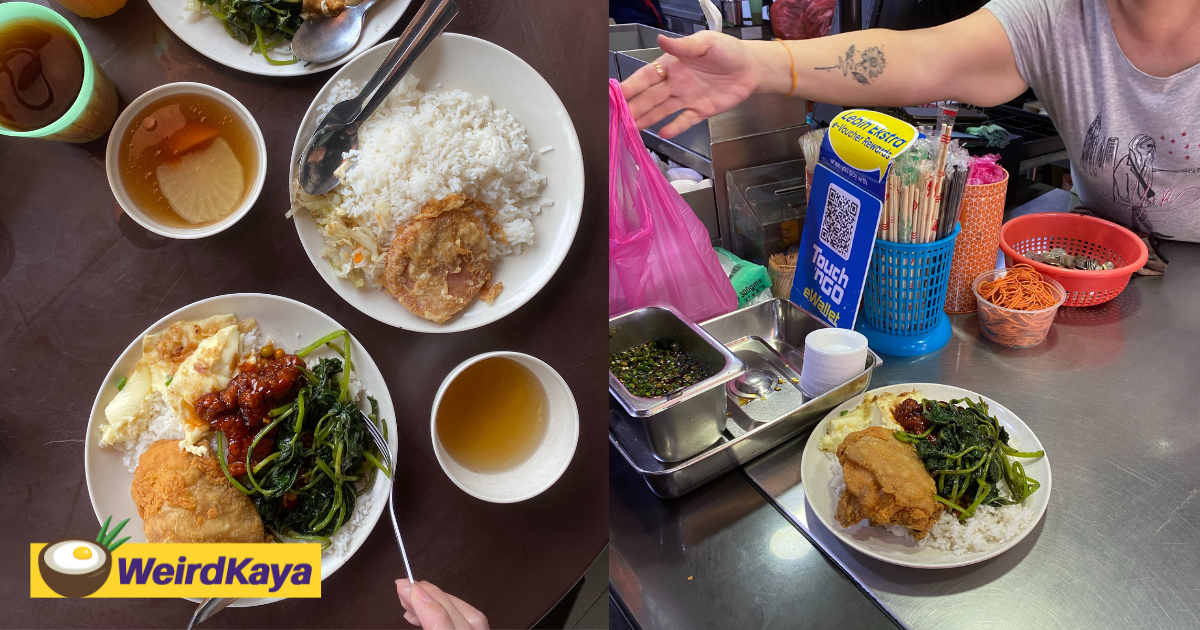When it comes to dining in Southeast Asia, particularly Malaysia and Singapore, there’s one culinary concept that will often come to mind: economy rice.
This simple-looking meal offers a delightful and diverse array of dishes, allowing diners to customize their meals to their heart’s content.
What makes a plate of economy rice?

Here’s how it typically works:
- Rice: The ‘heart’ of an economy rice meal is the white rice, though some places offer other options like brown or fried rice.
- Dishes: Customers are presented with a selection of pre-cooked dishes displayed in trays or containers. These dishes can include a wide range of items such as vegetables, meats, tofu, seafood, curries, stir-fried dishes, and more.
- Serving: Customers choose the dishes they want to accompany their rice. The server will then scoop or serve the chosen dishes onto a plate, which is typically divided into sections to separate the different items.
- Sauces/Gravy: Many places also provide a selection of sauces and condiments, allowing customers to add flavour and spice according to their preferences. Common sauces include soy sauce, chili sauce, and various sambals (spicy condiments).
- Pricing: The cost of the meal is often determined by the number and type of dishes chosen. Some dishes may be more expensive than others, and prices can vary depending on the location and quality of the ingredients.
Types of economy rice
While the term “economy rice” generally refers to the concept of customizing a meal by selecting from a variety of pre-cooked dishes to accompany rice, there are specific dishes that are based on regional preferences and culinary traditions.
Chinese-styled economy rice (chap fan)
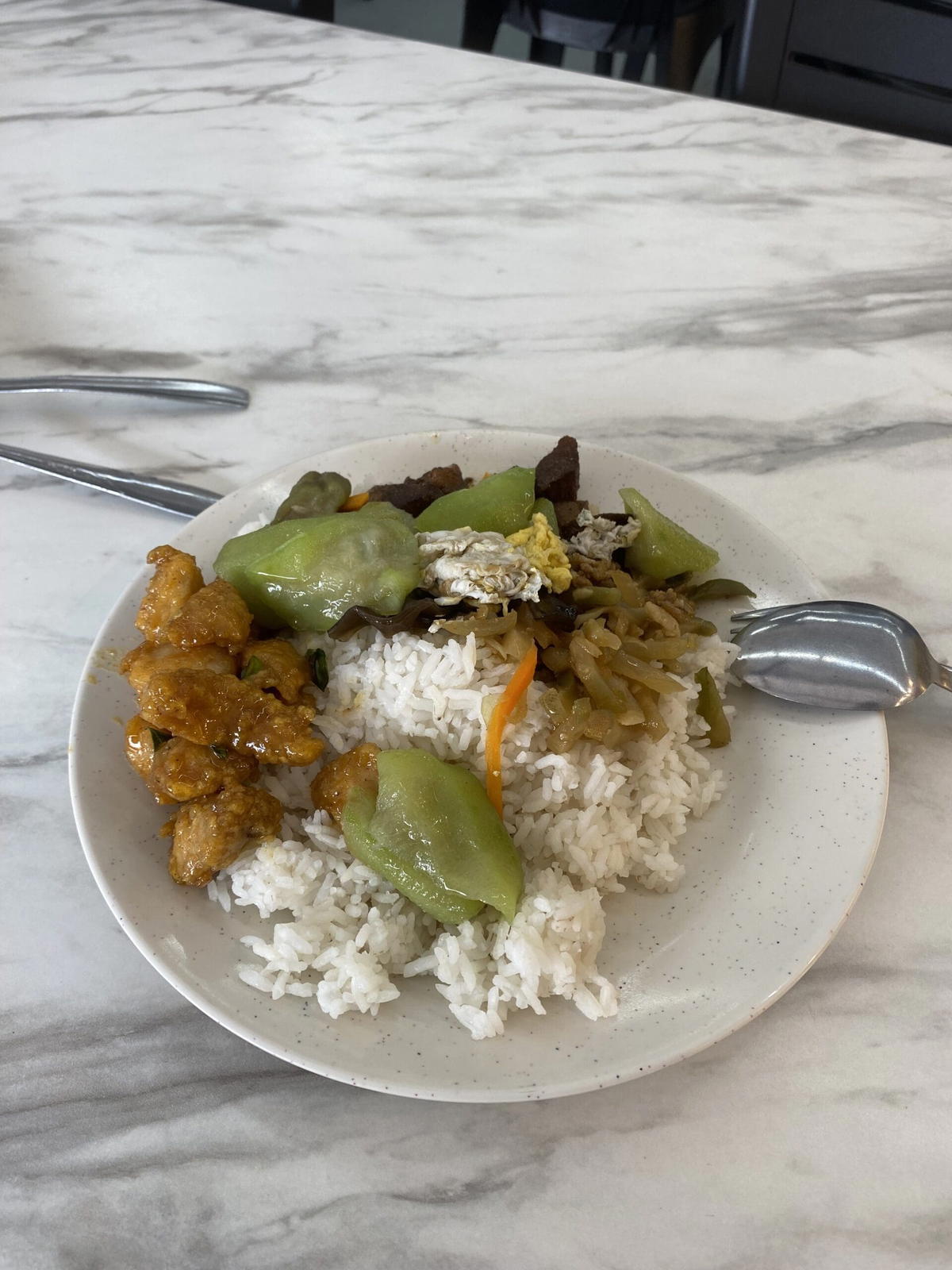
In many Chinese-speaking regions, economy rice is known as “cai fan” or “chap fan.” It offers a variety of Chinese dishes, including stir-fried vegetables, meats, tofu, and seafood, often accompanied by rice or noodles.
Other dishes like sweet and sour pork, kung pao chicken, and braised tofu are also rather popular.
Nasi Campur
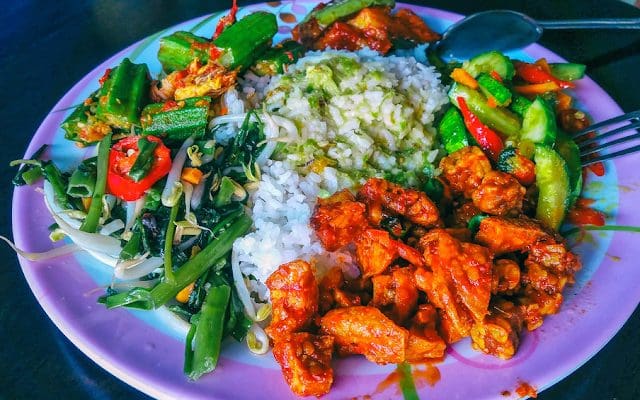
For the Malay community, their concept of economy rice is often known as ‘nasi campur‘ and features a selection of dishes like rendang (a flavourful beef dish), sambal (spicy chili paste), curries, and fried chicken.
Indian-styled economy rice
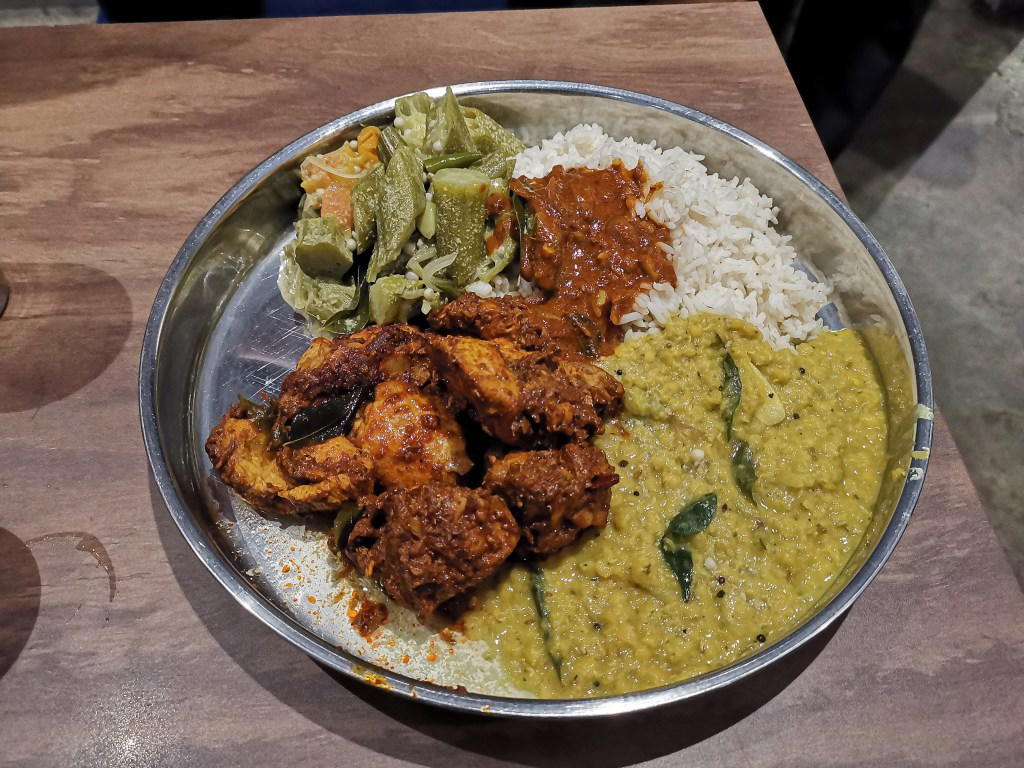
As for the Indian community, theirs is commonly known ‘mixed rice‘, where it is served on a metal tray brimming with various dishes, including curries, vegetables, lentils, and bread (such as naan or roti), offering a diverse range of flavours and textures.
Do’s and don’t’s
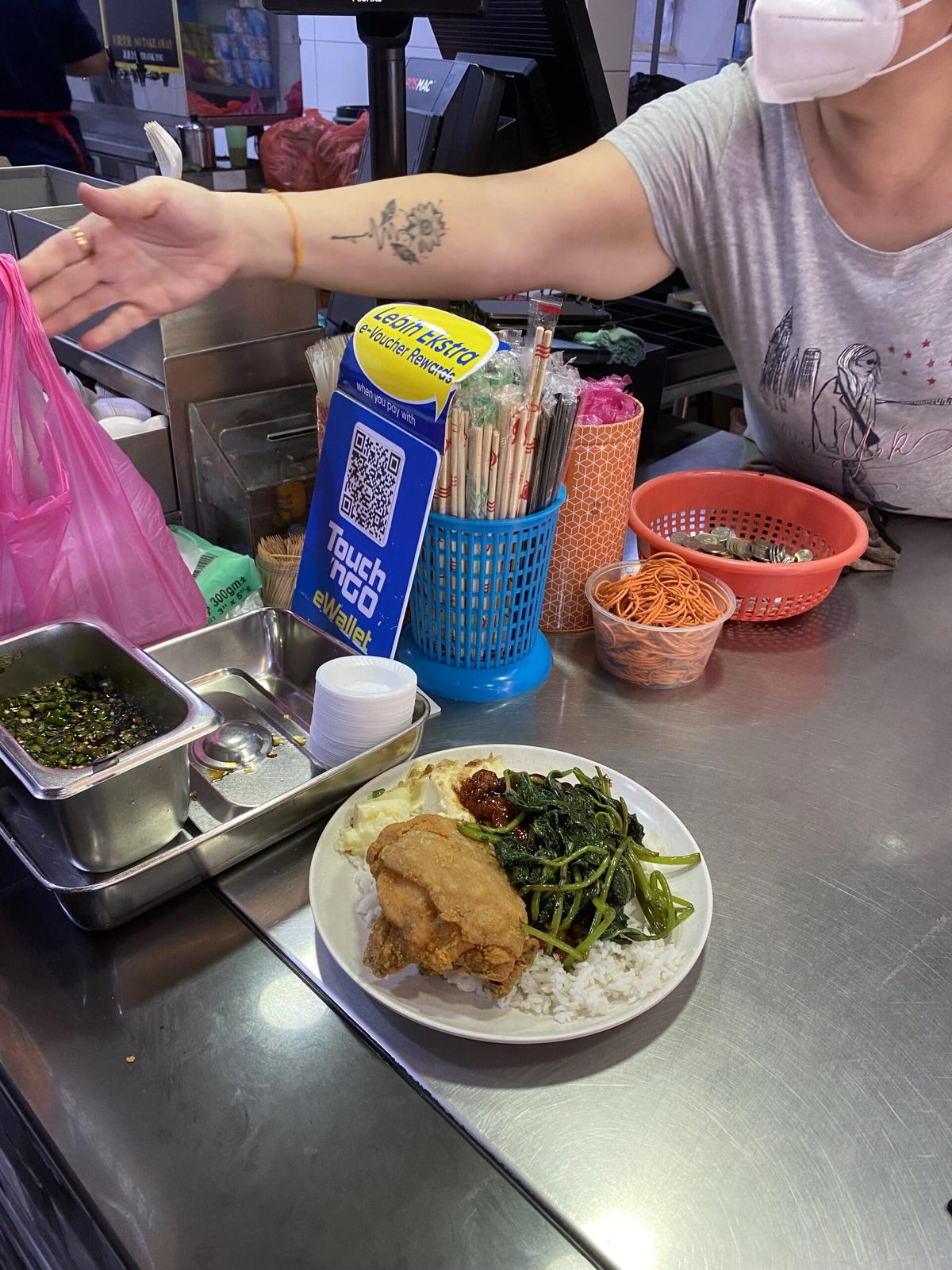
While there aren’t strict rules for ordering and enjoying economy rice, there are some general do’s and don’ts that can enhance your experience and etiquette when dining at such eateries.
Do’s:
- Pick and choose: Feel free to select the dishes that you find appealing. Part of the enjoyment of economy rice is the ability to customize your meal based on your preferences.
- Start with a base: Begin by choosing a base, usually rice, noodles, or another carbohydrate option, as it serves as the foundation of your meal.
- Use condiments wisely: Experiment with sauces and condiments to enhance the flavours of your meal. However, use them in moderation until you’re familiar with their spiciness or intensity.
- Bring cash: Many economy rice stalls may not accept credit or debit cards, so it’s a good idea to have cash on hand to pay for your meal.
Don’ts:
- Waste food: Try not to waste food. It’s considered respectful to take only what you can eat to minimize food wastage.
- Haggle over prices: In most cases, the prices for economy rice dishes are fixed, and haggling is not customary. Pay the listed price for the dishes you select.
Popular economy rice dishes
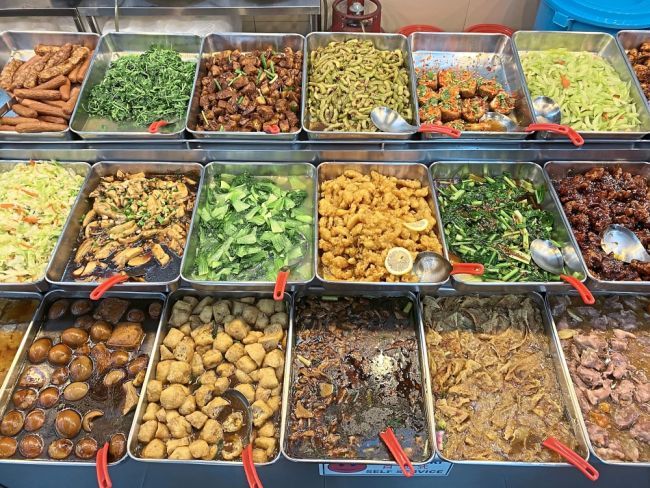
Protein options
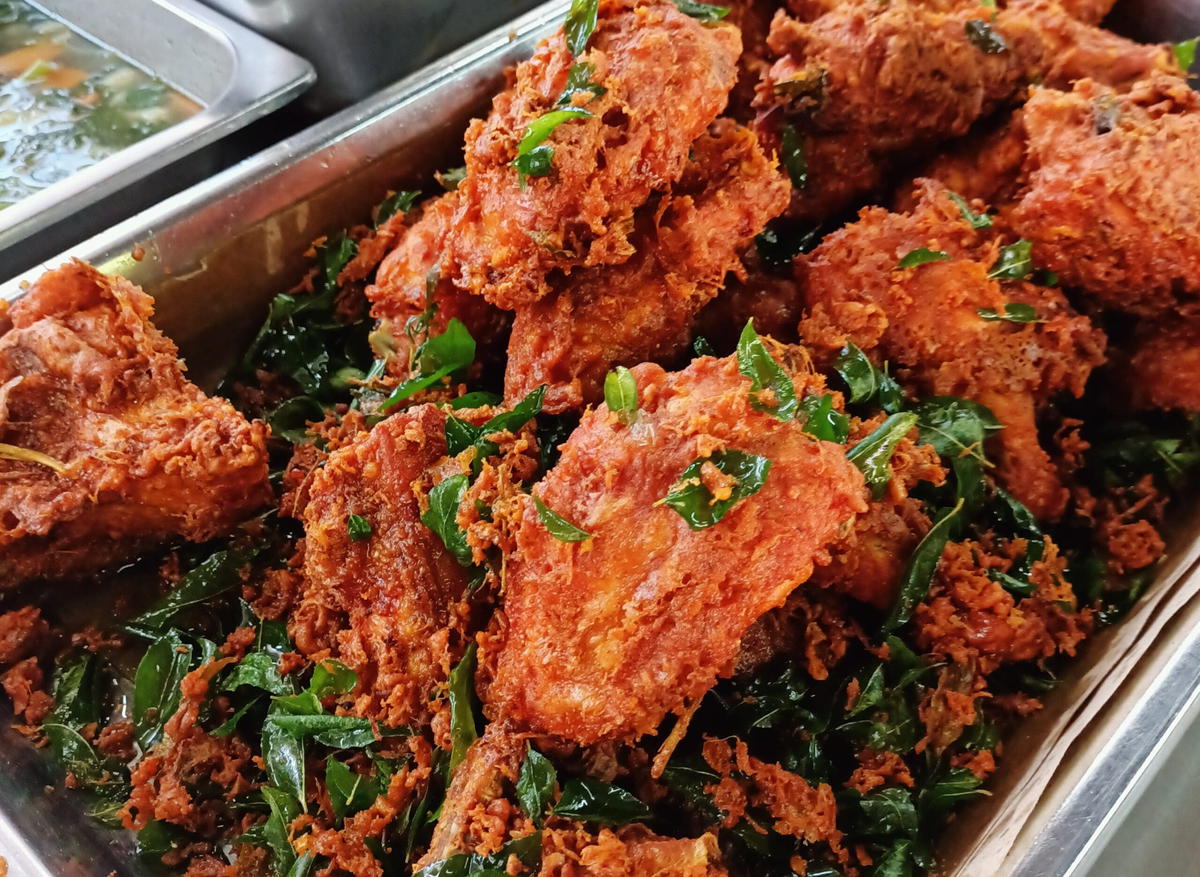
- Meats: Chicken, beef, pork, and sometimes duck or lamb dishes, prepared in various styles like stir-fried, braised, or deep-fried.
- Seafood: Fish, prawns, squid, and other seafood items, often cooked with different sauces and seasonings.
- Tofu and tempeh: Vegetarian and vegan options like tofu and tempeh are frequently available, prepared in various ways.
Vegetables

- Stir-fried vegetables: A variety of leafy greens, broccoli, bok choy, and other vegetables are commonly stir-fried with garlic and other seasonings.
- Curried vegetables: Some stalls offer vegetable curries with mixed vegetables cooked in rich and flavourful sauces.
Legumes and beans
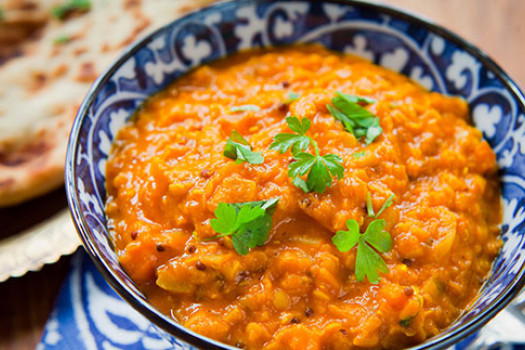
- Lentils and dals: In Indian-influenced economy rice, you might find lentil-based dishes such as dal.
- Beans: Dishes made with beans like black-eyed peas or kidney beans are also available.
Noodles and rice
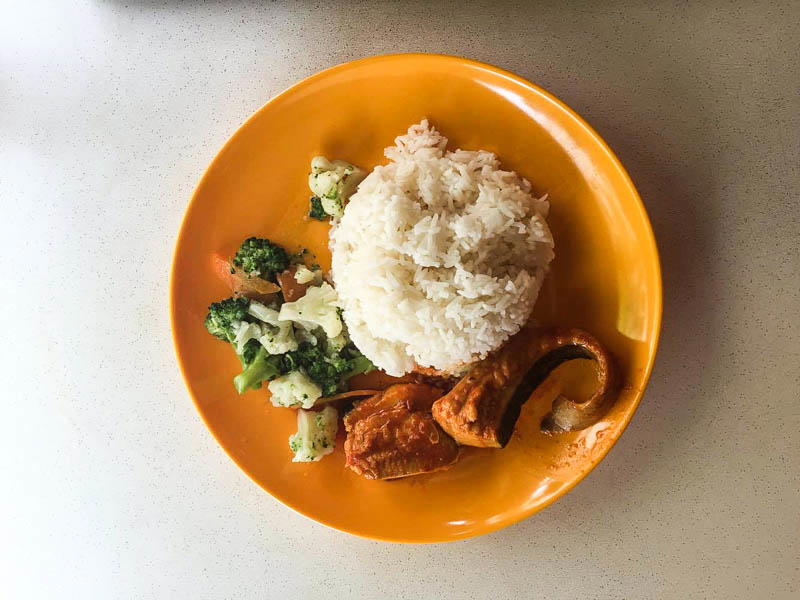
- Rice: Steamed white rice is the staple base for most economy rice meals, but some places also offer brown rice or fried rice.
- Noodles: Occasionally, you might find noodle options like fried noodles or rice vermicelli (bee hoon).
Sauces and curries

- Curries: Different types of curries, including red, green, yellow, or massaman curry, can be served with various protein and vegetable options.
- Stir-fry sauces: Oyster sauce, black bean sauce, and garlic sauce are commonly used in stir-fried dishes.
- Chili sauces: Spicy chili sauces and sambals are often available as condiments to add heat and flavour.
Side dishes
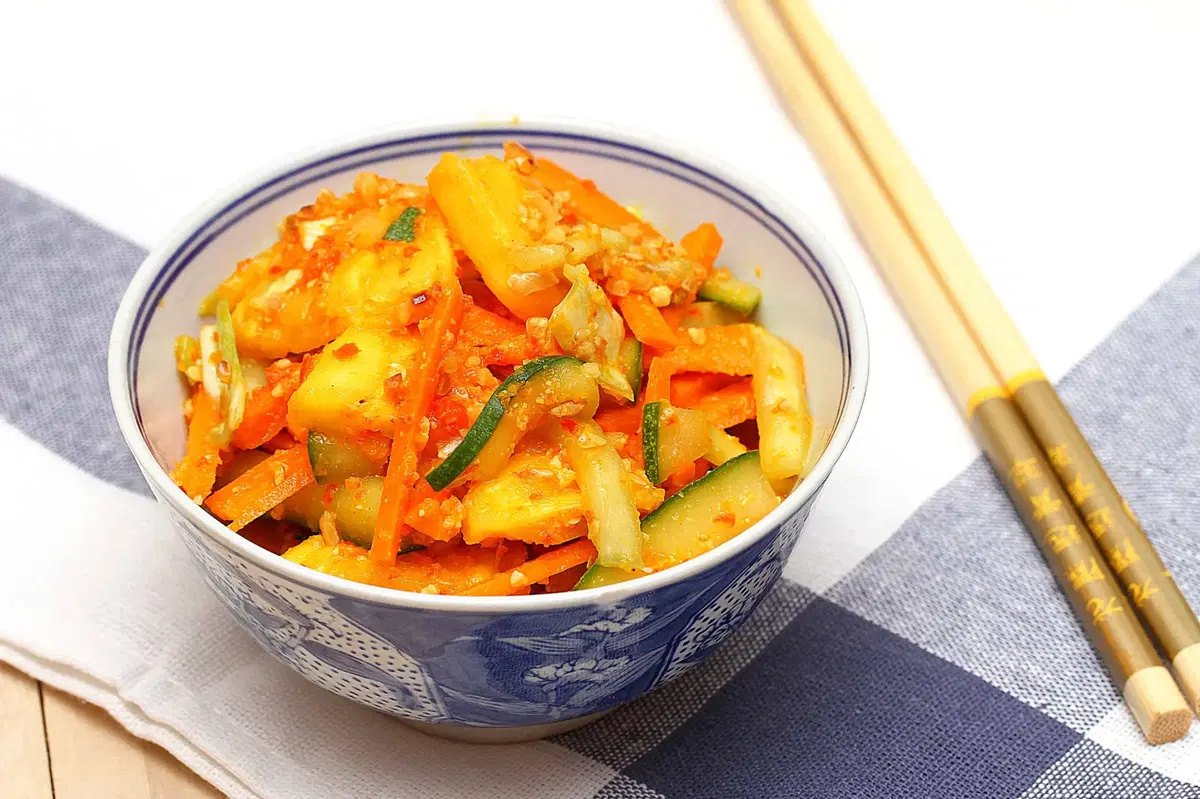
- Egg dishes: Fried or boiled eggs, omelettes, or egg-based dishes like eggplant with eggs may be on the menu.
- Pickle and achar: Fermented vegetables or pickles are sometimes offered as side dishes to add a tangy element to the meal.
- Fried items: Fried items like chicken wings, spring rolls, or tofu puffs might be available as well.
Soups:
- Some economy rice stalls offer soups as part of the meal, such as clear broths with vegetables or meat.
Desserts:
- For some places, you may find simple desserts like sweet tofu or sweetened rice pudding to finish off the meal on a sweet note. After all, what’s a hearty meal without dessert?
READ ALSO:



